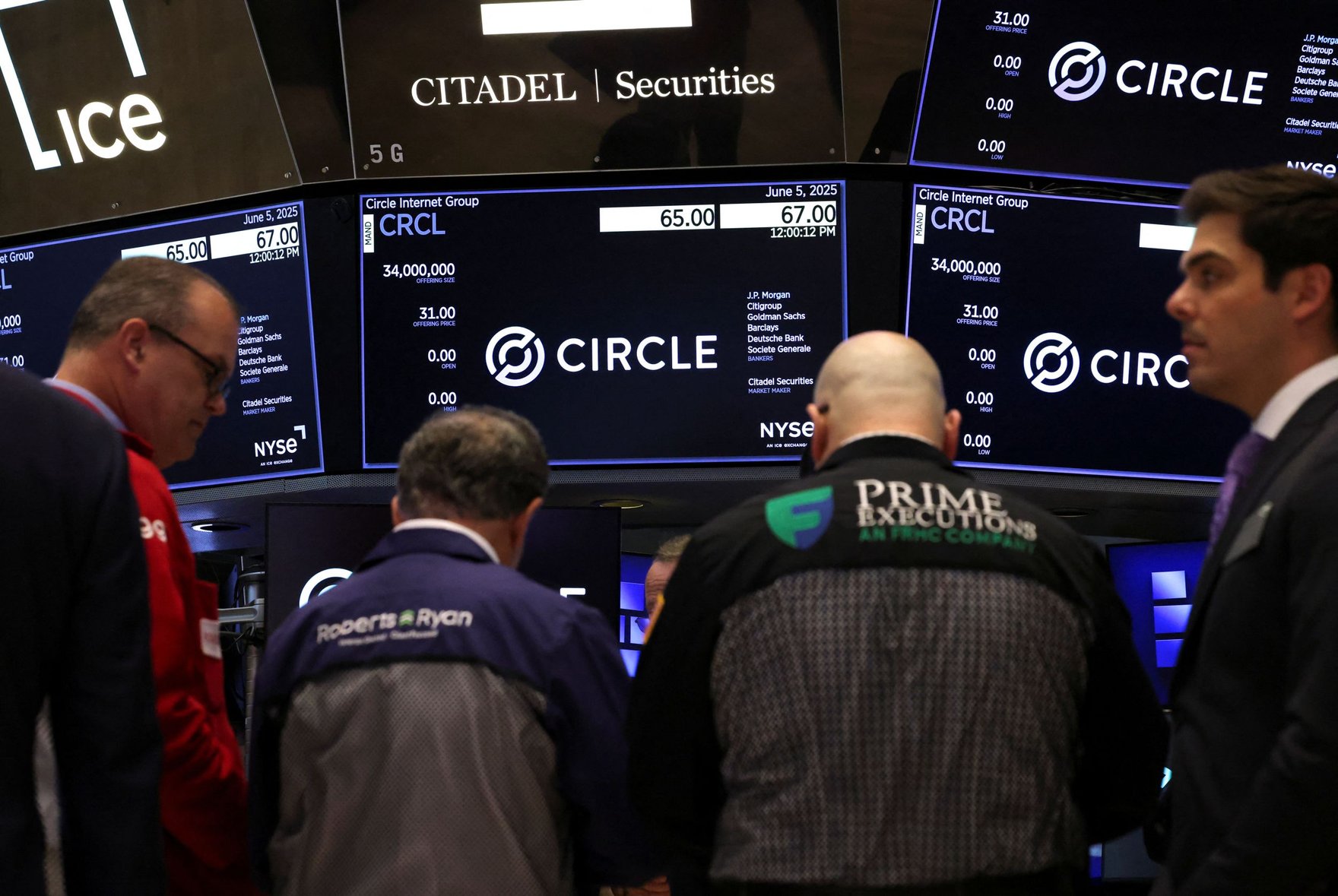Two weeks ago, the US Senate passed the GENIUS Act, a first-of-its-kind stablecoin bill that hands the crypto industry its first major legislative win. However, despite the current momentum in the industry, the rapid growth of crypto-assets has the potential to become a source of systemic risk if panics and crashes in that sector spill over into conventional finance. Most crypto-assets, such as bitcoin, are volatile, delivering both extreme gains and losses because they have no inherent connection to the wider economy. Stablecoins, on the other hand, promise to be less volatile by maintaining a stable value relative to an official currency.
This link to state-issued currency, however, represents particular risks to the economy and should be the focus of attention as part of a broader regulatory system to achieve larger financial stability objectives. With the emergence of marked cross-national differences in regulatory approaches to crypto-assets, policy makers also need to think about how to prevent and contain possible crisis contagion across jurisdictions.
At present, more than 97 percent of total stablecoin value is pegged to US dollars. Much like commercial banks, issuers of stablecoins typically use some of the deposited funds to invest in other assets while promising users redemption on demand. Despite that, and unlike conventional financial institutions, issuers are not bound by reserve requirements, risk management, or surveillance by actors with the expertise and authority to examine their practices. In 2022, for example, the chief technology officer of Tether deflected questions about its reserve assets by saying he couldn’t reveal their “secret sauce.” As of June 2025, Tether has a market capitalization of US$155 billion and accounts for 62 percent of the value of all stablecoins.
Stablecoins are a primary conduit through which value is exchanged between conventional assets and crypto-assets, and are thus central nodes in the crypto-asset network at which surveillance and governance can be effectively focused. Additionally, they are a “critical source of liquidity” for crypto-asset trading and finance as a whole. As a result, these cryptocurrencies resemble forms of “shadow money,” assets used like cash in the financial system because of their perceived safety. In this sense, stablecoins resemble instruments such as asset-backed commercial paper, whose misperceived safety and widespread use as collateral for further trading played a major role in the 2008 crisis.
Stablecoins are already large enough that the assets they do hold as reserves could introduce problems for both their own stability and that of conventional finance.
The perception of stablecoins as safe, cash-equivalent assets can create a false sense of security that could quickly turn into panic if their convertibility into cash becomes widely doubted or is broken. In many ways, this is an issue similar to bank runs and currency peg failure. The May 2022 collapse of the TerraUSD stablecoin, for example, was prompted by fears about its backing and redemption, resulting in US$40 billion of market value being wiped out. Fortunately, while this crash had minimal impact on the broader financial system and economy, the same might not be true in the future if crypto-assets become more integrated with conventional finance.
In fact, stablecoins are already large enough that the assets they do hold as reserves could introduce problems for both their own stability and that of conventional finance. The largest stablecoins, such as Tether and USDC, claim to hold safe assets such as US Treasury Bills as reserves and are collectively estimated to own more short-term US government debt than China. A run on a stablecoin could force issuers into a fire sale of these backing assets in order to get the cash needed to pay redemptions. This could potentially impact short-term bond yields and government borrowing costs, and result in unpredictable spillover effects by suddenly depressing the price of a sovereign debt instrument that is widely used as collateral and liquidity in the conventional financial system.
Crypto Exposure Risk and Regulation
Increased investment in crypto-assets by institutional investors creates avenues for risks in crypto-assets to spill over into the conventional side of finance, and, in fact, large funding flows between crypto and conventional assets are already a possibility. While data is lacking, one US-focused survey of institutional investors by EY Parthenon shows that 73 percent have exposure to crypto-assets, and 85 percent increased their holdings in 2024.
With mainstream finance increasingly exposed to crypto-assets, problems in this sector could more easily affect the conventional financial system. Better data and monitoring of stablecoins, as well as the purchases and holdings of them by conventional financial institutions, can help to both clarify the extent of risk that crypto-assets as a whole pose to financial stability and inform what actions need to be taken. Without better data, it is hard to know what problems may exist or what needs to be done about them.
Conversely, stablecoins can also be one way for regulators to get a handle on the wider crypto-asset sector, particularly as international efforts to manage these risks are likely to be stymied by key players such as the United States refusing to cooperate. In a 2022 report, the Financial Stability Board (FSB) warned that although not currently used widely enough to be problematic, stablecoins have grown rapidly, are used internationally and can quickly scale up, thus posing a potential future threat. Accordingly, in 2021 the FSB proposed a framework for crypto-asset regulation, and some member jurisdictions have enacted policies to align with its recommendations.
However, over one-third of FSB member jurisdictions are yet to establish a timeline for regulatory alignment on crypto-assets. Furthermore, this framework could also backtrack, as the crypto-finance sector is aggressively lobbying the White House for looser regulation that would promote closer integration with conventional finance in the United States. Since crypto-assets are commonly used in criminal activity, the United States has already established digital asset reserves based on tokens seized in the course of legal proceedings.
While it remains unclear what impact this reserve may have on markets or government finances, it signals that the current administration is supportive of such interests and unlikely to cooperate with multilateral efforts to temper the risks. While it is not feasible to entirely prevent negative impacts, cooperation between like-minded governments can help insulate them from the worst. Indeed, countries with stronger banking regulation, such as Australia and Canada, were able to avoid bank collapses and bailouts during the 2008 global financial crisis.
National regulators thus need to be attentive to how regulatory changes toward crypto-assets in some countries, including major financial centres, could generate cross-border risks. A possible example of that risk could be multinational banks starting to accept some crypto-assets as collateral in particular countries. That acceptance could imply those crypto-assets were perceived as “safe,” which could create credit risk if the backing of those assets unexpectedly fell in value.
Research from the International Monetary Fund has suggested another worry. Problems originating in conventional finance that might otherwise have been contained and managed could be amplified and propagated in the crypto-asset sphere, where such financial expertise and experience is relatively low. Unexpected problems could result from a downturn in the real economy, setting off unforeseen scenarios or vulnerabilities, as happened in 2022 when hackers exploited a technical flaw in the Beanstalk stablecoin to allocate themselves all its reserve assets, leading to losses of US$180 million. That lack of expertise and experience could also be what sets off the critical failure points of crypto-asset frauds, such as in the cases of QuadrigaCX or FTX.
In many ways, stablecoins are just one focus for the broader precautionary regulation that will be needed surrounding crypto-assets to provide a minimum degree of investor protection and to safeguard financial stability. Financial innovation is alluring, but the nature of crypto-assets and the hype around them raises uncomfortable parallels with the prelude to the 2007-08 financial crisis. Regulators should carefully monitor and decisively act to prevent crypto-assets becoming too big to fail. It would be a dark irony if Bitcoin, which was created to protest the 2008 bank bailouts, became the root of another economic crisis.




